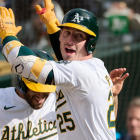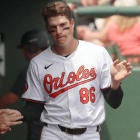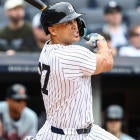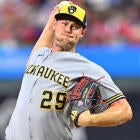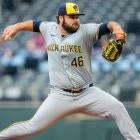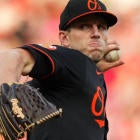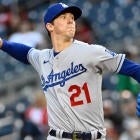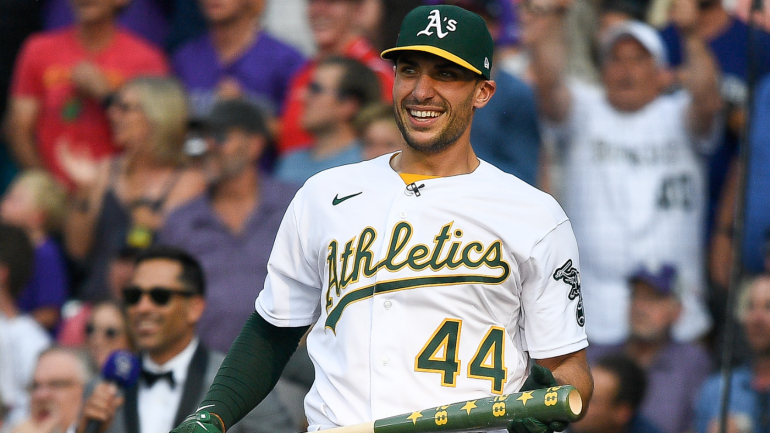
The second hot stove has heated up in recent days with the new CBA ratified, and one of the biggest moves of the offseason went down Monday as the Braves acquired first baseman Matt Olson from the Athletics for a pretty enticing package of prospects. Of course, while this deal matters in its own right because Olson is one of the best first basemen in the majors, it's also quite important for what it means for Freddie Freeman's future.
Because it sure looks like it closes the door on Freeman's chances of returning to Atlanta, the only organization he has ever played for to this point, and before we get to what this move means for the Braves and A's, it's worth talking briefly about Freeman's status. We're still waiting to find out where he will be signing, but with the Braves out of the running, it seemingly narrows the field down to the Yankees and Dodgers, with the Blue Jays among a few other teams mentioned as possible options who could swoop in.
Not that it necessarily matters for Freeman's Fantasy appeal where he signs. He's one of the best hitters in baseball, and while Dodger Stadium and Yankee Stadium would be better home parks than Atlanta's, it's not like either would be enough to move him ahead of Vladimir Guerrero Jr. in the first base ranks. He's going to rake no matter where he ends up, so while we hope we'll know soon, if you're drafting before we find out, don't let it change your opinion on Freeman one way or the other. He's that kind of hitter.
Now, let's break down what this trade means for the players and teams involved:
Braves acquire 1B Matt Olson
Olson isn't far off from Freeman's class, which means it probably doesn't matter all that much that he's switching home parks. Oakland is a notoriously tough environment for hitters, and Olson has pretty consistently been better on the road than at home, so it's not unreasonable to expect better results from Olson in Atlanta – Truist Park ranks 11th over the past three seasons in park factor for home runs by lefties per BaseballSavant.com, while RingCentral Coliseum in Oakland ranks 23rd. So, that's a nice bump.
But, if Olson hits like he did last season, it just won't matter very much, because his power doesn't necessarily depend on where he's playing. The key question isn't really one of power, but of plate discipline; can Olson sustain his 16.8% strikeout rate? That was a massive improvement over his 31.4% mark in 2020 or his 25.2% mark in 2019, and if it was for real, he's going to be one of the best hitters in baseball yet again. If not, he'll still hit for a ton of power, though his batting average will likely suffer.
The nice thing about the trade is, he'll definitely have a better lineup around him. Even with the A's having the advantage of the DH, they scored 47 fewer runs than the Braves did in 2021. This should once again be one of the best offenses in baseball, so Olson should have no problem replicating last year's numbers – if he maintains the skills gains he made.
I could maybe see pushing Olson up a few spots in the overall rankings as a result of this trade, perhaps from 34 to 31, just behind someone like Yordan Alvarez. But he's not leap-frogging Freeman, and even that small of a jump in the overall rankings mostly represents a difference in personal preference. In all likelihood, Olson will remain an awesome hitter and a borderline elite Fantasy option, so the status quo is mostly in place in Atlanta, even if the names and faces are different.
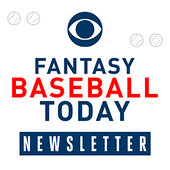
Fantasy Baseball Today Newsletter
Your Cheat Code To Fantasy Baseball
You're destined to gain an edge over your friends with advice from the award-winning FBT crew.
Thanks for signing up!
Keep an eye on your inbox.
Sorry!
There was an error processing your subscription.
A's acquire OF Christian Pache, C Shea Langeliers, and SPs Ryan Cusick and Joey Estes
By most accounts, the A's did quite well to get this kind of return despite everyone knowing Olson was going to be on the move. Perhaps that's reflective of the Braves need to ensure they weren't left holding the bag if and when Freeman moved on, but either way, this is a strong collection of prospects.
Let's go one by one to look at their potential 2022 value as well as their long-term appeal:
- Christian Pache: Every mention of Pache starts with the glove, which perhaps isn't what Fantasy players want to hear about. He is considered to be one of the very best defensive outfielders in professional baseball at any level, and that should be enough to get him in the lineup everyday starting on Opening Day. The problem for our purposes is, there doesn't appear to be much to get excited about in his profile for Fantasy. He hit 12 homers in 133 games at Double-A and 12 more in 115 in Triple-A, while hitting below .275 with fewer than 10 steals at each level. He really hasn't run much since he was in Class A, and with a 46% success rate on 37 attempts in the high minors, it's not hard to see why. Which makes it hard to see how he becomes a reliable Fantasy option. At this point, expectations for the bat are pretty low, though there are still some who see a leap coming eventually. At this point, a Michael Taylor-esque offensive profile would probably be a pretty good outcome, which tells you just about everything you need to know. He's worth rostering in AL-only leagues, but even in a deep 15-team Roto league, you probably don't want to spend anything more than a final-round pick to see if he makes a leap early on. If not, cut him.
- Shea Langeliers: Langeliers
- is part of a crop of intriguing catcher prospects we hope can help remake the position in the coming years. But, it's worth keeping in mind that he's a catcher prospect. The hit rate for young catchers is even lower than for most prospects, and they often take longer to figure things out. Just look at Langeliers' new org mate, Sean Murphy, a similarly touted prospect who has developed into a solid regular, but by no means a Fantasy star. Langeliers has the potential to be a standout power hitter for the position, and after playing 92 games at Double-A last season, he could be ready for the majors sometime in 2022. However, unless you're in a Dynasty or deeper AL-only league, you don't need to stash him right now. Wait until he gets called up.
- Ryan Cusick: Cusick is a hard-throwing righty with a power breaking ball and not much else in the arsenal of note, so many prospect folks see a future reliever in him. He threw 16.1 innings in his pro debut after the Braves took him with the 24th pick in last year's draft, so we're dealing with a small sample size here. He struggled to throw strikes at times in college, which is part of the reliever projection, too. However, the upside is considerable given his present arsenal, and if he can stick as a starter and develop a reliable third offering, Oakland would make an awfully nice place to call him as a pitcher. For that alone, he's got some Dynasty appeal – though you'd probably need to be in a league that rosters more than 200 prospects before he would need to be on your radar at this point.
- Joey Estes: Estes is the also-ran of this group, but he's not without appeal in his own right. He was quite good as a 19-year-old in Low-A in 2021, striking out 127 in 99 innings while doing an excellent job of limiting hits, walks, and homers. He doesn't overwhelm with stuff so much as pitching skill, and that's the kind of profile that can often fizzle as the level of competition increases, but Estes is young enough that projecting some improvement isn't unreasonable. You'd need to be in a particularly deep Roto league for Estes to really matter right now, but he's someone to put on your watchlist where prospects matter.














